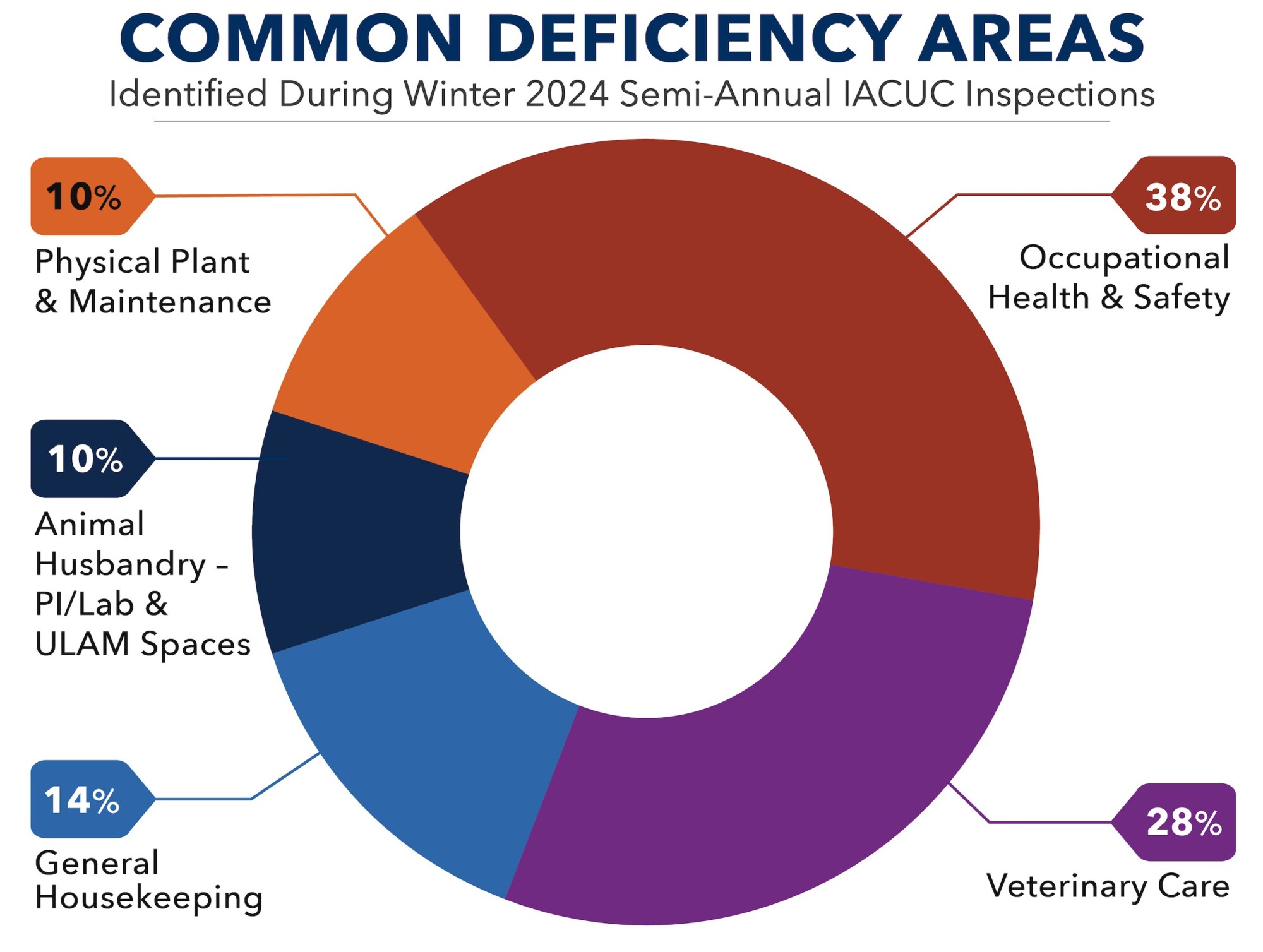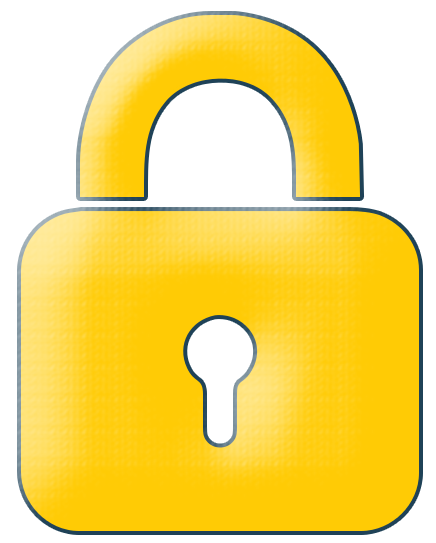
The Institutional Animal Care & Use Committee (IACUC) completed its latest round of semi-annual facility inspections in mid-March.
These inspections are one of the most important tools we have for routinely assessing programmatic strengths and identifying areas for individual and collective improvement(s) in service to the animals entrusted to our care.
Through this lens of shared responsibility for safeguarding animal welfare and ensuring continued programmatic compliance, please review and discuss the findings, suggestions for improvement, and resources below with all members of your staff – including any students involved with research in your lab – in advance of Fall 2024 semi-annual facility inspections.
The Fall 2024 Semi-Annual IACUC Facility Inspection Schedule will be released soon.
Semi-annual facility inspections include any animal rooms, surgical suite support spaces, and areas where procedures are conducted with animals.
Common Deficiency Areas** Identified During Winter 2024 Inspections:
Examples:
- Compressed gas cylinders not properly stored
- Eyewash stations not properly maintained
- Engineering controls (BSC, fume hoods, LEV) not certified annually
Suggestions for Improvement:
- Download and review EHS Compressed Gas Guidelines and SOPs, which outline that storage of compressed gas cylinders requires sturdy chains or straps secured to a wall or cabinet, and/or use of a cylinder stand
- Contact EHS at (734) 647-1143 for assistance with annual hood certification. Additional guidance is also available on the EHS website
Examples:
- Post-operative records incomplete or not properly maintained
- Materials and substances, including chemical hazards, not appropriately labeled
- Anesthetic machines/canisters not properly maintained
Suggestions for Improvement:
- Refer to the Guidelines on Medical Records for Investigative Personnel, the Guidelines on the Performance of Surgery in Rodents, and/or the Guidelines on the Performance of Surgery in Non-Rodent Mammals for detailed information on recordkeeping processes and procedures
- Download the Quick Reference Sheet: Avoiding Common Mistakes When Completing Surgical Records for Mice & Rats

- Ensure all materials/substances are labeled and dated, if necessary, upon arrival/order (review the Policy on the Use, Storage, and Expiration of Substances, Agents, and Medical Materials Used in Animals for more information)
- Review the Policy on Maintaining Anesthetic Machines and Vaporizers, which states that anesthetic machines/vaporizers must be manually assessed at yearly intervals to ensure high-quality anesthesia for research animals and a safe working environment for personnel
- Utilize ULAM services for quarterly anesthetic machine servicing and certification
Examples
- Areas cluttered and generally unkempt
Suggestions for Improvement:
- Create and maintain a regular cleaning schedule
- Select one or two lab members to regularly review, and be responsible for, housekeeping items/tasks
Examples
- Sanitation practices for all lab equipment that comes into direct contact with animals were not established and/or equipment was soiled
Suggestions for Improvement:
- Download the Quick Reference Sheet: Equipment Cleaning & Sanitization Guidance to familiarize yourself with the procedures and expectations for equipment sanitization and testing
Examples:
- Walls, floors, or furniture required repair
Suggestions for Improvement:
- Work with your ULAM Husbandry Supervisor
 and/or Plant Operations staff to address any service or facility repairs in a timely manner
and/or Plant Operations staff to address any service or facility repairs in a timely manner
**Percentages above represent the number of overall deficient findings in a given area (e.g., Physical Plant & Maintenance – 10% denotes that, of the total findings identified during Winter 2024 semi-annual facility inspections, 10% were related to physical plant and maintenance).
Questions?
Questions or concerns about semi-annual IACUC facility inspections, or any of the items outlined above, should be directed to the Animal Care & Use Office at [email protected] or (734) 763-8028.
![]() Links marked with a lock icon can only be accessed using valid U-M login credentials.
Links marked with a lock icon can only be accessed using valid U-M login credentials.